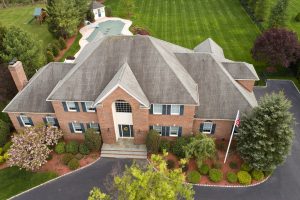 New single family home versus an apartment? It’s not only largely a matter of preference—but size as well, according to Storagecafe.com.
New single family home versus an apartment? It’s not only largely a matter of preference—but size as well, according to Storagecafe.com.
Because people have spent more time at home the last few months than probably ever before due to COVID-19, the size of the home has assumed all the more importance.
While the average size of a new single family home construction in 2019 was 2,611 square feet; 143 larger than a decade ago, the average size of an apartment was 1,156 square feet. That’s 90 square feet smaller than those built in 2010.
With new single family homes coming in last year at an average of 3,330 square feet; approximately 916 more than the size than a home that went up in 2010, among the 20 largest U.S. cities, Chicago headed the list for largest homes. Homes in Denver are considerably smaller than 10 years ago at 2,056, however. Compared to 2010, that’s smaller by 197 square feet.
Meantime, the biggest apartments in the U.S., at 987, square feet, are being erected in Jacksonville. Conversely, the smallest are in Seattle, where the average size is 676 square feet.
In conjunction with size, people might be finding news to utilize their homes; in other words, more than merely living spaces, many homes have turned into multifunctional quarters to accommodate other roles, including work, recreation and education. Fueled by those priorities, more space—just enough to accommodate comfortable living—are being yielded by newly constructed residences. That said, the same can’t be said for apartments, which are missing the mark in the need for additional space at home.
Builders leveraging plot sizes and the interest of buyers in larger homes are the catalyst in the acceleration in size.
“Builders are notorious for maximizing their square footage for resale, so whatever number they can achieve through zoning rights, they will satisfy,” said Jason Rowland, a real estate broker with Compass Real Estate, explained in an interview for StorageCafe's sister division, RENTCafé:.
Not only that, most single family home buyers use that 3,000 to 3,500 square footage as the baseline in their search, he added. “Depending on lot size and zoning, you can add extra square footage to the floorplan, which can put you into the 4,000 to 5,000 range.”
The average size of single family homes built in the U.S. was trending upwards from 2010 until 2017, According to the latest available US Census data. That’s when sizes peaked at 2,643 square feet. From that point, the size of single family homes started to topple, with homes built in 2019 averaging 2,611 square feet. That said, when looking at the entire period from 2010 to 2019, new single family homes still found traction; spiking 143 square feet—around the size of an average bedroom.
In March, there reportedly was an ongoing steady decline in the size of single-family homes, according to a report on the demographic of single-family home size by the National Association of Home Builders (NAHB).
The reason for the drop off: The report attributed it as mostly a result of the Q4 2019’s interest rates remaining low, as well as to the fact that builders were looking for additional entry-level supply.
Through data obtained from the Census’ Quarterly Starts and Completions by Purpose and Design as well as NAHB’s own analysis, the median single-family square floor area lowered to 2,252 square feet. Meantime, the average square footage for new single-family homes climbed to 2,511 square feet.

 theMReport.com Your trusted source for mortgage banking news
theMReport.com Your trusted source for mortgage banking news









